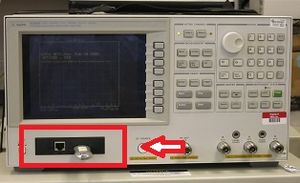Difference between revisions of "Floppy drive upgrade"
(update) |
|||
| (7 intermediate revisions by 2 users not shown) | |||
| Line 1: | Line 1: | ||
A common floppy drive upgrade for older embroidery machines is a [[floppy disk emulator]]. This is a device that | [[File:destoyed_floppy_drive.jpg|thumb|right|alt=Typically floppy disk|Typically floppy disk]] | ||
A common ''floppy drive upgrade'' for older embroidery machines is a [[floppy disk emulator]]. This is a device that uses solid state storage to emulate a mechanical floppy disk drive. The new drive is fully compatible with the floppy drive it replaces. | |||
==History== | |||
Embroidery machines built from the 1970s until the mid 2000s often used a [[floppy disk drive]] to input design data to the machine. When compared to newer storage technologies, floppy disks are fragile and prone to dysfunction. A [[floppy disk emulator]] can upgrade the legacy floppy disk drive to a drive that supports flash memory. The floppy disk drive emulator replaces the legacy magnetic floppy disk drive, and floppy diskettes are replaced with USB thumb drives for a more robust data input solution. | |||
[[File:Agilent4395A-with-PLR-Floppy2USB-with-box-arrows.jpg |thumb|right|alt=Agilent network Analyzer with floppy drive to USB drive upgrade|''Agilent network analyzer with [[Floppy To USB]] drive upgrade'']] | |||
Replacement floppy disks and floppy disk drives are not always available for industrial machinery as those devices have largely been phased out of production. However, replacing older but working machinery with new machines is generally far more expensive that a simple floppy drive upgrade option. | |||
==See also== | |||
*[[Floppy To USB]] | |||
*[[Floppy disk drive]] | |||
Latest revision as of 18:36, 15 October 2013
A common floppy drive upgrade for older embroidery machines is a floppy disk emulator. This is a device that uses solid state storage to emulate a mechanical floppy disk drive. The new drive is fully compatible with the floppy drive it replaces.
History
Embroidery machines built from the 1970s until the mid 2000s often used a floppy disk drive to input design data to the machine. When compared to newer storage technologies, floppy disks are fragile and prone to dysfunction. A floppy disk emulator can upgrade the legacy floppy disk drive to a drive that supports flash memory. The floppy disk drive emulator replaces the legacy magnetic floppy disk drive, and floppy diskettes are replaced with USB thumb drives for a more robust data input solution.

Replacement floppy disks and floppy disk drives are not always available for industrial machinery as those devices have largely been phased out of production. However, replacing older but working machinery with new machines is generally far more expensive that a simple floppy drive upgrade option.